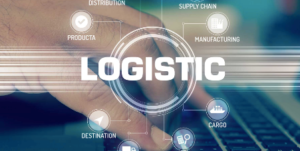Like other industries, technology is rapidly changing how the logistics industry does business. In the trucking segment, digitization has led to a fast-growing number of automated load-matching companies that connect carriers, shippers, and freight brokers efficiently in ways that were unimaginable just ten years ago.
At DriverSource, we’ve seen many changes just over the last twenty years in how carriers, shippers, and brokers connect. Spreadsheets, notebooks, telephones, and laminated maps are being replaced by digital platforms instantly matching available trucks with available loads on the spot in real-time.
While it is true that old-school brokers still match the majority of loads between shippers and truckers, more and more logistics companies consider this brokerage model as time-consuming and expensive. In the traditional brokerage model, it takes about 100 phone calls amounting to 50 to 75% of a logistics company’s time to match shippers with carriers.
https://www.truckinginfo.com/336365/technology-is-changing-how-carriers-shippers-and-brokers-connect
Using Technology to Match Loads With Trucks
Digital relationships are now replacing emails and phones in how shippers and carriers connect. “What automated matching means is no humans are involved in helping the carrier find the job,” says Nikhil Jaipuria, director of product for Convoy.
That’s an improvement, according to Lidia Yan, founder of Next Trucking, another digital broker service. She says “traditional brokers have their “preferred” carrier they work with. Digital brokers can bring transparency. We allow shippers to connect directly without a lot of human intervention.” Eliminating the traditional broker also means more profit going to the carrier.
Supply Chain Visibility is KEY
Digitalization means ongoing, real-time visibility. Electronic logging devices (ELDs) along with rapid advances in vehicle telematics, have facilitated the ability to know where trucks are at all times. Thanks largely to Amazon and e-commerce, this constant visibility is what consumers are increasingly demanding. They want to know where their shipment is and when they can expect delivery. Large carriers such as UPS and FedEx already offer this visibility, so other carriers must find ways to offer the same visibility or risk being driven out of the market. They are turning to companies such as EKA Omni-TMS. It is a cloud-based company offering digital tools for real-time tracking of freight for small-to-medium brokers, carriers, and shippers.
There is Also Visibility in Rates, Pricing, and Payments
Digitalization is bringing new visibility in pricing. This is allowing carriers to decide on a price immediately. This replaces the process of contracting a price based on a bid process or picking up the phone and negotiating a price. Instead, brokers and shippers can now see pricing data in the market in an easier, better, and more reliable way.
In summary, digitalization is bringing transparency and ease-of-connection previously unavailable in trucking. It is giving carriers, large and small, increased opportunities to control their business and make the best decisions.
Bill D for DriverSource


